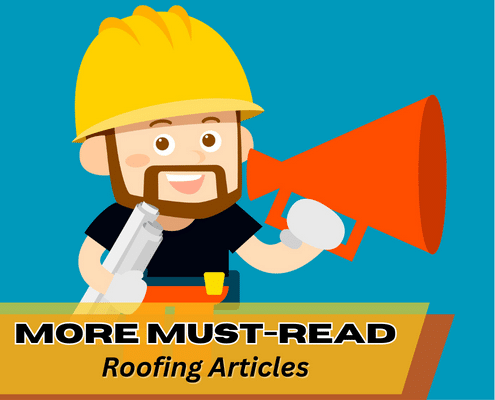4.9 1890+ Google Reviews
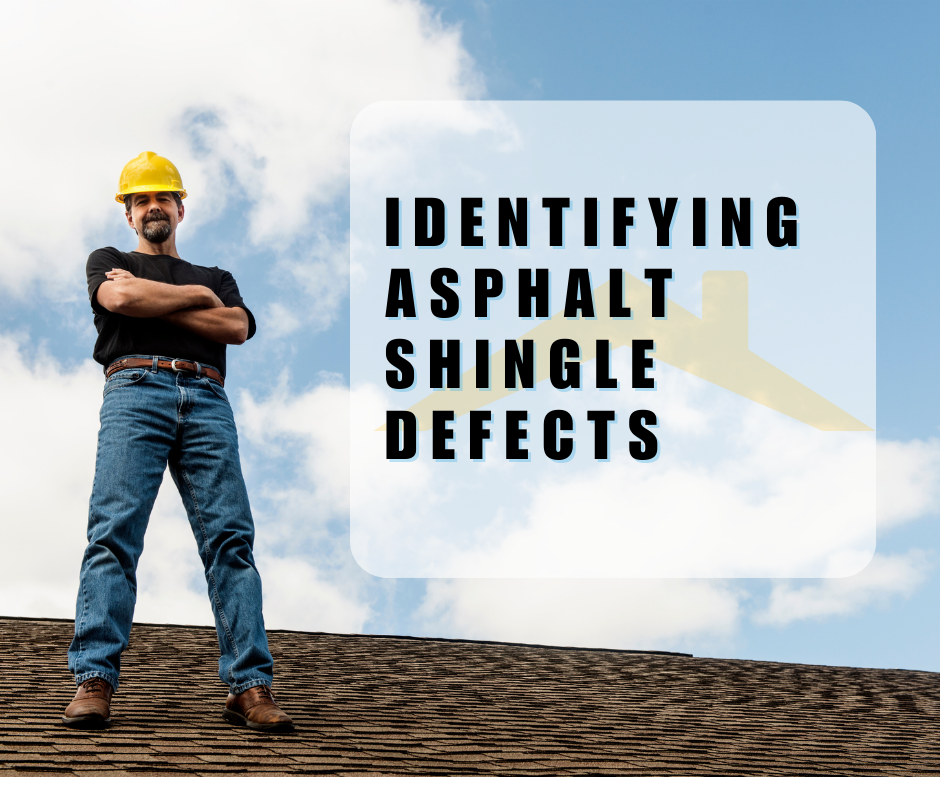
Whether you have a new roof or an aging roof, regular inspections and maintenance extend its life. Plus, a working knowledge of your roofing materials prevents insurance companies and roofers from taking advantage of you. The most common type of shingles in the United States are asphalt shingle roofs. So, we’ve created this guide to help with Identifying Asphalt Shingle Defects.
Before you can identify their defects, you’ll need to understand a little about asphalt roofing shingles. To start, most shingles are about 3 feet long and 1 foot wide. However, modern premium shingles are slightly larger. Once installed on a roof, it isn’t easy to see where one shingle starts and ends. But if you look closely, you can see the ends.
All shingles have a concealed section and an exposed section. Intuitively, the exposed portion of one shingle overlaps the concealed area of the lower shingle. This overlapping pattern protects the nail heads and creates a waterproof barrier.
Granules make up the pebble-like coating embedded in the shingle. These shingle granules offer protection from physical damage and UV radiation. Plus, they make the shingles look nicer and grippier for walking on.
If you lift the shingle, you’ll see the nails, an adhesive strip, and possibly a nailing strip. The adhesive strips bond two layers of shingles together to prevent wind damage. They may be on the bottom or top of the shingle. Once installed, the shingles heat up, and the adhesive strips melt and bond.
Once the adhesive strip sets, lifting the shingles is not easy. Although you could break the seal with a putty knife, I would not recommend it unless necessary. And if you do break the seal, make sure to reseal it with roofing cement.
Some shingles, like the one in the photo, have a reinforced nailing zone to enhance wind resistance. Otherwise, the nailing zone is almost always below the adhesive strip. Nails Installed in the nailing zone go through two layers of shingles – the layer you drive the nail through and the layer underneath.
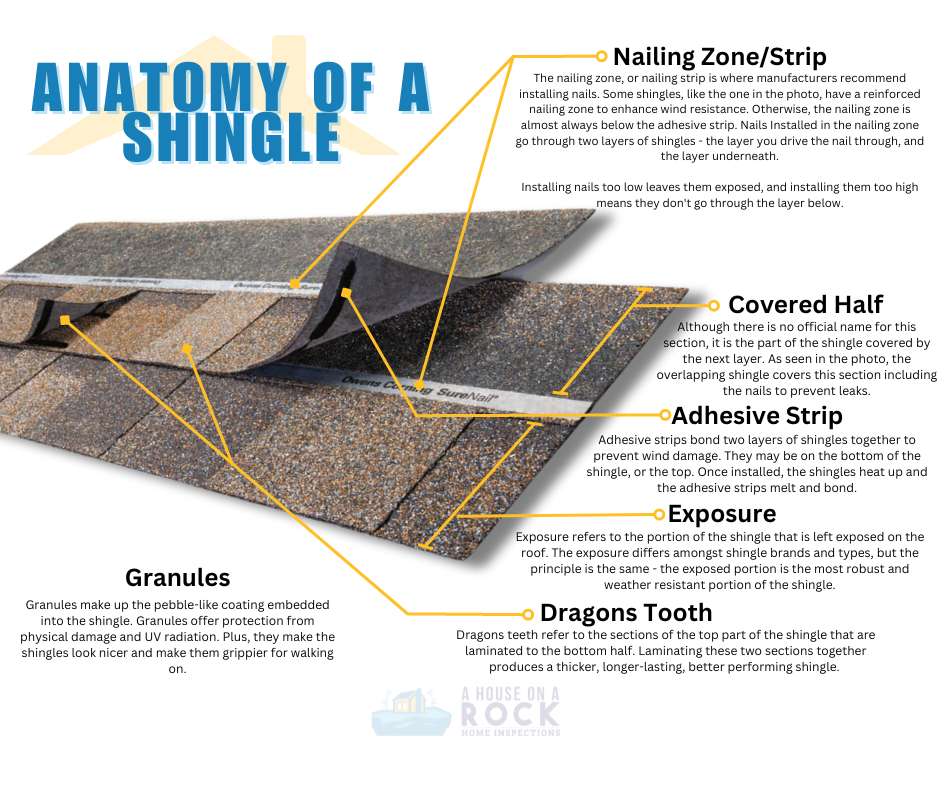
Identifying which type of shingle you have helps estimate the remaining lifespan. For the most part, there are two main types of shingles – three-tab asphalt shingles and laminated asphalt shingles. Laminated shingles also go by architectural, dimensional, laminated architectural, laminated dimensional, or really any combination of those three words.
3-tab shingles aren’t that common anymore due to the superior quality, lifespan, and price of laminated shingles. However, flippers and cash-strapped owners may still opt for a 3-tab shingle roof.
On 3-tab shingles, the exposure is three separate tabs, giving this shingle its name. Plus, they’re flat and uniform in appearance. So, if you’ve ever seen a house with a very orderly, grid-like shingle pattern on the roof, it’s likely 3-tab shingles.
Conversely, dragon teeth give laminated/dimensional shingles their multi-dimensional appearance. Plus, they’re thicker, heavier, and more robust than 3-tab shingles.
Now, we’re ready to go over some common asphalt shingle problems.
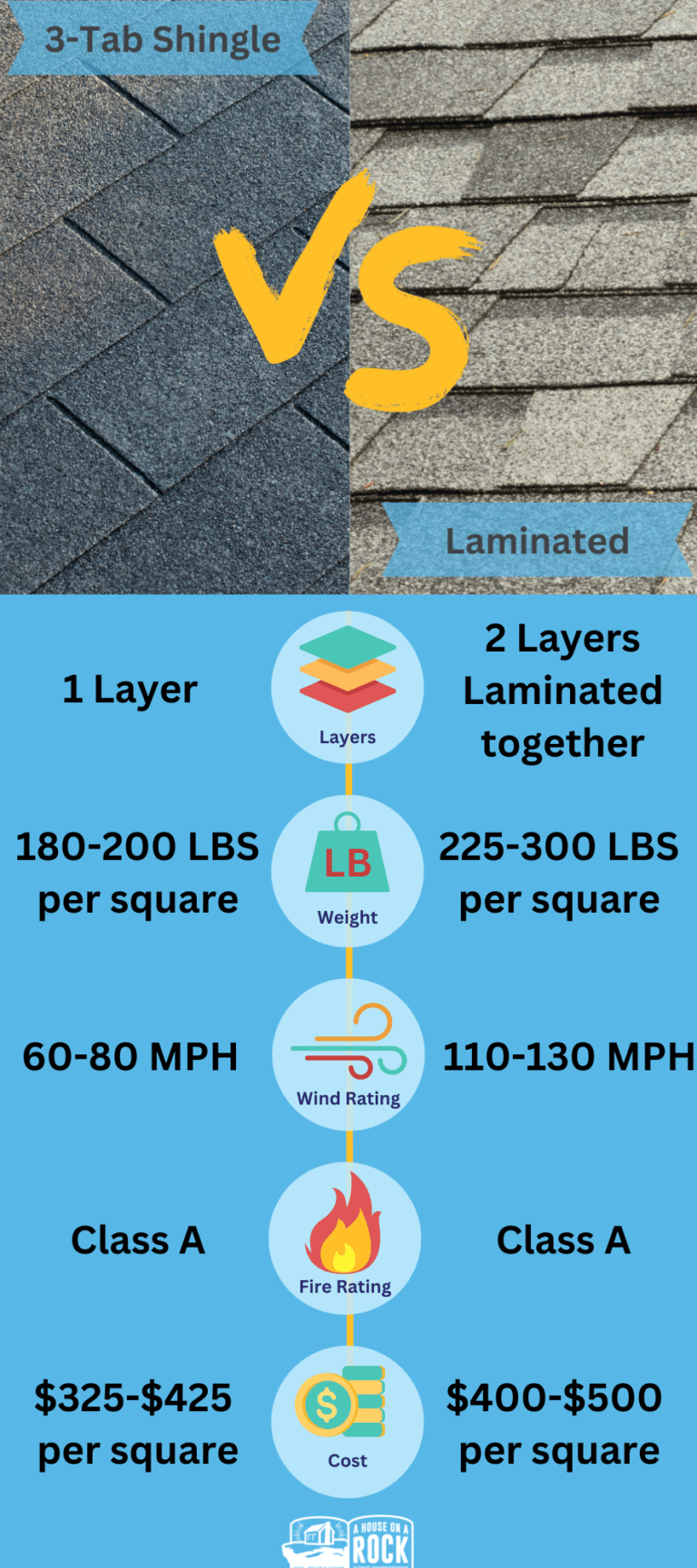
Self-adhesive strips (tar strips, seal strips) are the most critical aspect of your roof’s wind resistance. They seal down the leading edge of the shingle to prevent uplift from the wind. Unfortunately, the adhesive strips sometimes fail long before the shingles fail. Additionally, since they require several days in the heat to activate, installation in cold temperatures can cause failure.
Once the adhesive strips fail, the shingles are more prone to storm damage from high winds and other defects.
The fact that most shingle manufacturers only provide 5-year wind warranties is a revealing clue about the lifespan of these adhesive strips.
You should not be able to lift the edges of the shingles. If you can lift the shingles, the self-adhesive strips are failing or have failed. Unfortunately, the only remedy is to hand seal any affected shingles with roofing cement. Although you could leave them as is, resealing them will extend the lifespan of your roof.

Moss (and lichens) may look pretty on your roof, but they’re quietly wreaking havoc. Although there is some disagreement about whether moss deteriorates shingles, it’s clear that moss causes roof damage and leaks. This is because moss grows under the shingles and pushes them up, making them prone to wind damage and leaks.
So, a little moss probably won’t hurt at first. However, left untreated, water damage, mold, and expensive repairs are inevitable. It’s pretty easy to clean moss off your roof. But it’s best left to the professionals if you’re scared of heights.
Zinc strips or sprays are a promising solution if you have a chronic moss and lichen problem.
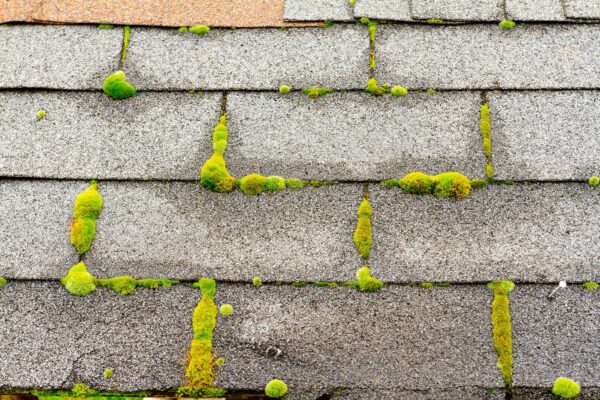
Identifying the difference between moss and algae on your roof is easy yet often neglected.
Algae growth presents as a black discoloration on your roof. Homeowners and many home inspectors mistake algae for moss or mold. And many roof cleaners and roofing contractors perpetuate the myth that it damages roofs. Fortunately, industry leaders such as ARMA maintain that there is no evidence to suggest that algae are harmful to a roof. If the appearance bothers you, spray the roof with a bleach mixture or other proprietary cleaners.(ad)

Blistering has two different appearances – intact and popped. Intact blisters look like pimples or little bumps on the shingle’s surface. On the other hand, popped blisters look like little craters.
While manufacturing defects are a potential cause, poor attic ventilation is always a cause. Shingles baking in the summer heat need attic ventilation to help cool them off, or they’ll overheat, bubble, blister, and pop. But poor attic ventilation increases the attic temperature, thus increasing the temperature of the underside of the shingles.
If the blisters are still intact, then this issue is primarily cosmetic. However, if the blisters are popped, the shingles will deteriorate much quicker, leading to further damage. In either case, blistering indicates you need to improve your attic ventilation. If there is a widespread blister popping, it’s a good idea to talk to a roofing company about replacement.
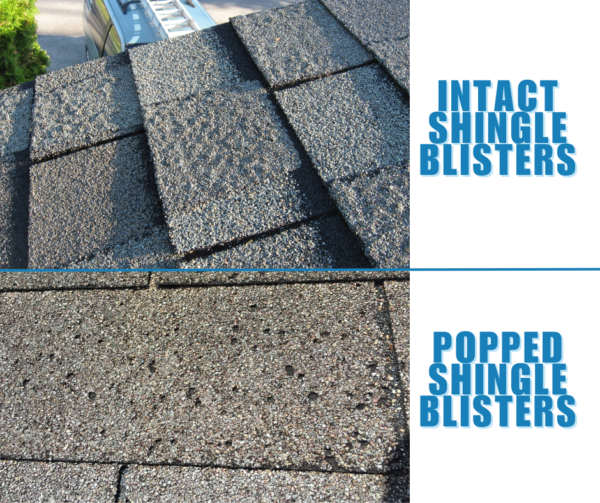
Hail damage is a prevalent issue in some areas. Unfortunately, if you’ve never experienced a hail storm, identifying roof hail damage or problems may not be a skill you’ve developed. Plus, it’s often confused with blistering even though they’re pretty different in nature.
If you suspect hail damage, call your insurance company before calling a roofer. They will likely send out an insurance adjuster to evaluate the damage before approving an insurance claim.
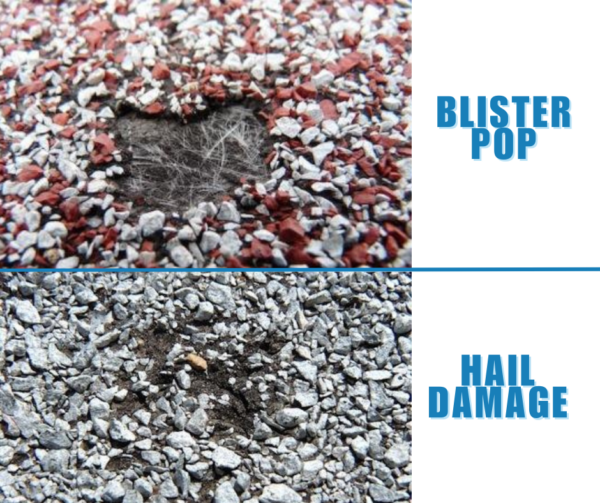
Asphalt Shingle Craze Cracking refers to the fine, superficial, network-like pattern of cracks that can appear on the surface of an asphalt shingle. The name is apt, as the cracks form a “craze” pattern, similar to the cracking seen on old pottery or glazed ceramics. In contrast, deeper more structural cracks may compromise the shingle’s integrity.
It’s essential to note that while craze cracking is mostly a cosmetic issue, it indicates the aging of the shingle. Over time, a roof with extensive craze cracking may become more susceptible to other forms of damage or wear. Likewise, if you observe these cracks, it’s a good idea to keep an eye on the roof’s overall condition and consider consultation with roofing professionals for an evaluation.
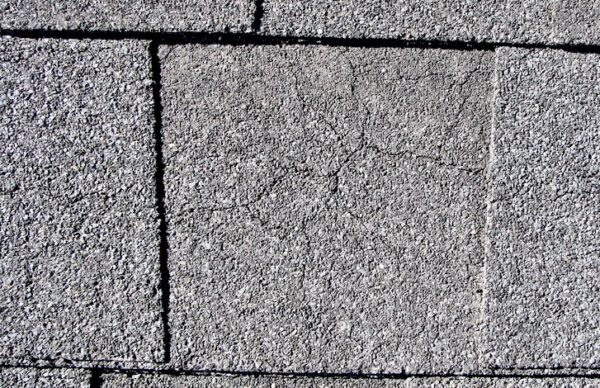
Asphalt Shingle Curling is a phenomenon where the edges of the shingles curl upwards or downwards, away from the roof deck. Unfortunately, when shingles curl, they can no longer perform effectively as a barrier against the elements, making them less effective at shedding water and more susceptible to wind uplift.

Manufacturing defects in shingles can compromise a roof’s longevity, functionality, and appearance. Generally, no specific defects are definitely manufacturing defects. Instead, you’re looking for patterns and ruling out installation as a cause. For example, if defective shingles are in one specific section of the roof, this may indicate only that batch/pack was bad. So, if you have any type of damage, take a closer look for tell-tale signs of defective shingles.
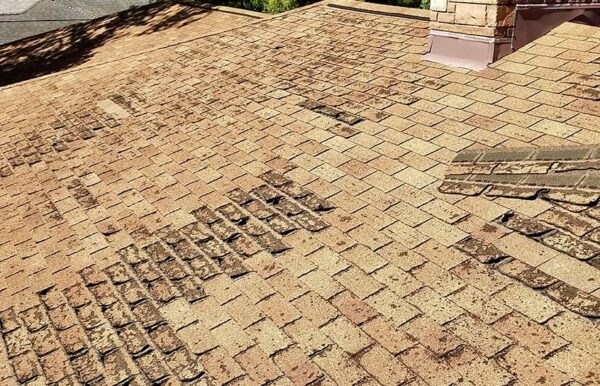
There are many other types of shingle damage, such as missing shingles, bald spots, boot damage, and other intentional damage. Most of these are easy to spot and don’t require a working knowledge of asphalt shingle roofing.
When in doubt, always call a professional home inspector for your roofing inspections. Unlike roofers, home inspectors have no reason to sell you on repairs you don’t need.
And never schedule a free roof inspection. Offering free roof inspections is a strategy used by roofers to drum up business (sell roofs).
